Tropical epiphytic Utricularia are found growing in bromeliad urns, moss, bark, or decaying leaves on cliffs, hillsides, and trees in fog forests in the Caribbean, Central and South America, and Africa. Many have underground tubers and may have a period of dormancy each year. Epiphytic Utricularia make excellent additions to any large terrarium or bright window sill if your house is very humid but really are best grown in cool, humid greenhouses. They are generally grown for their spectacular flowers that can put orchids to shame.
The soil mix you use for Epiphytic Utricularia depends very much on which species and your exact conditions. They are usually grown in a very light, well drained soil mix or live Sphagnum. A typical mix would be one part each long fibered Sphagnum, perlite, and pumice. Another common mix is one part each long fibered sphagnum, fine orchid bark, peat, and perlite. It is best to use Chilean or New Zealand long fibered Sphagnum since it degrades much slower than North American Sphagnum. If live Sphagnum grows very well under your conditions, try using it as your growing medium. To see what growing medium works best for the conditions you can provide, try divisions of the same clone in different mixes and watering schemes at the same time.
Some Epiphytic Utricularia grow best in hanging orchid net pots with frequent overhead watering. Other species that naturally live in Bromeliad water urns can be grown in live Sphagnum in a small amount of water. Epiphytic Utricularia do require pure water and appreciate the addition of very small amounts of fertilizer in the water.
Utricularia alpina and Utricularia asplundii are the easiest of the epiphytic species to grow. Start with those species and if they do well for you over a period of a few years then explore the other more demanding species. For more information on growing particular species, please see Barry Rice's ICPS FAQ pages About epiphytic & emergent Utricularia and About Utricularia section Orchidioides, the Terraforums Utricularia, section Orchidioides - info sharing & discussion, and Travis Wyman's CPN article ( PDF ) keeping in mind you may need to adjust soil, pots, and watering for your exact conditions.
The growing mixes for epiphytic Utricularia are too coarse for direct seeding. It is best to put a 1 cm layer of finely chopped long fibered sphagnum and fine perlite over the your preferred planting mix. An alternative is to start the seeds in the sphagnum and fine perlite mix and later transplant the small plants.
Sow seeds of Utricularia on the surface and place the the pot in a plastic bag in a warm location until the seeds germinate. After the seeds germinate, remove the pot from the plastic bag and put the pot to a bright location such as a terrarium. The surface of the planting medium must be kept wet. Mist it with pure water regularly. More seeds may continue to germinate and you may notice they do so soon after you spray them. If you find the soil surface is drying out too quickly, you may leave the pot in the plastic bag. Please see Sowing Seeds Step-by-Step for more details on starting seeds.
Epiphytic Utricularia can easily be propagated from stem cuttings. They will recover and grow more quickly if you include a small tuber. Be careful when you grow them because if you have the plants too close to each other they will spread into adjacent pots mixing up what you have.
-- Text by John Brittnacher
Photos by RL7836
For more information please see:
Butschi, Lorenz. Translation by Dorothea Huber and Klaus Ammann (1989) Carnivorous plants of Auyantepui in Venezuela. Carniv. Pl. Newslett. 18(1):15-18 ( PDF )
Rutishauser, Rolf and Jeannette Brugger and Lorenz Butschi (1992) Structural and developmental diversity of Utricularia traps. Carniv. Pl. Newslett. 21(3):68-74 ( PDF )
Miloslav Studnicka (2004) Observations on Two Different Forms of Utricularia reniformis. Carniv. Pl. Newslett. 33(2):47-51 ( PDF )
Wyman, Travis H. and Sebastian Vieira (2006) Utricularia jamesoniana in cultivation. Carniv. Pl. Newslett. 35(1):14-18 ( PDF )
Wyman, Travis H. (2008) On Growing Utricularia sect. Orchidioides. Carniv. Pl. Newslett. 37(3):68-74 ( PDF )
Rice, Barry (2011) Tuberous organs in Utricularia, and new observations of sub-tuberous stolons on Utricularia radiata Small. Carniv. Pl. Newslett. 40(3):88-91 ( PDF )
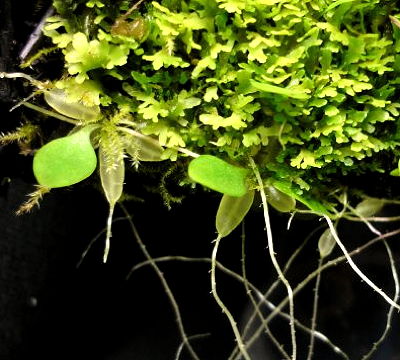
Utricularia jamesoniana tubers.

Utricularia reniformis f. courte.
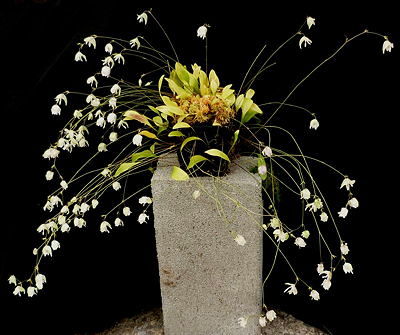
Utricularia asplundii in full glory.
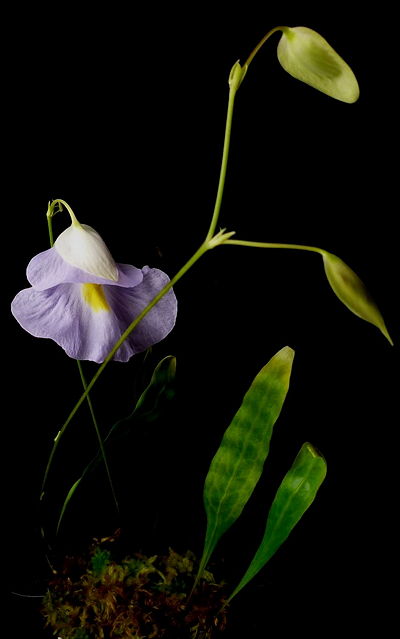
Utricularia endresii.
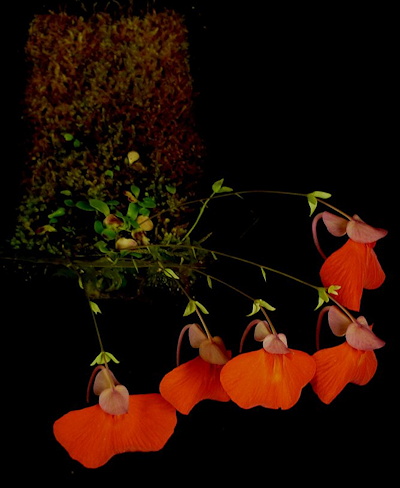
Utricularia campbelliana.

Utricularia alpina is an easy to grow Utricularia with spectacular flowers.
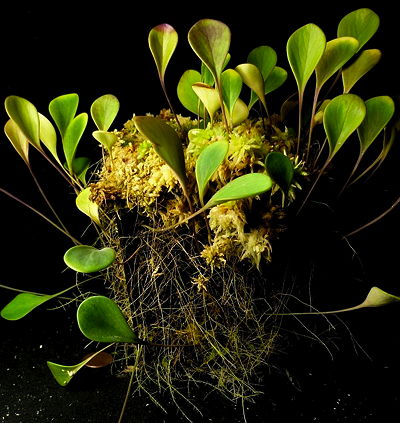
Utricularia quelchii growing in a hanging basket. Note the stems reaching out.

Utricularia quelchii flower.
